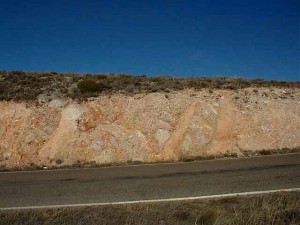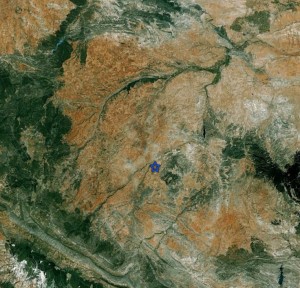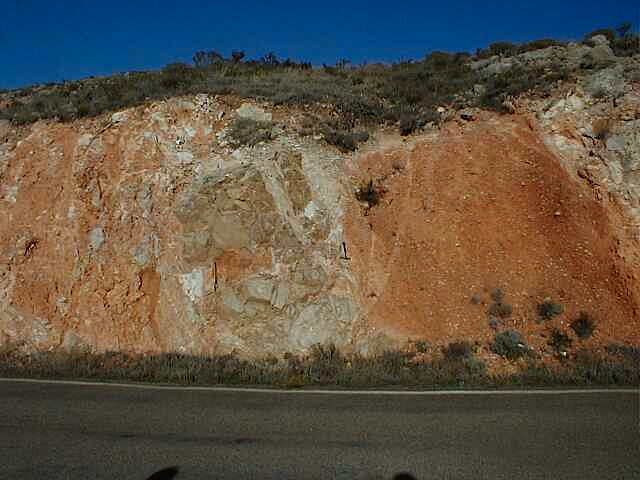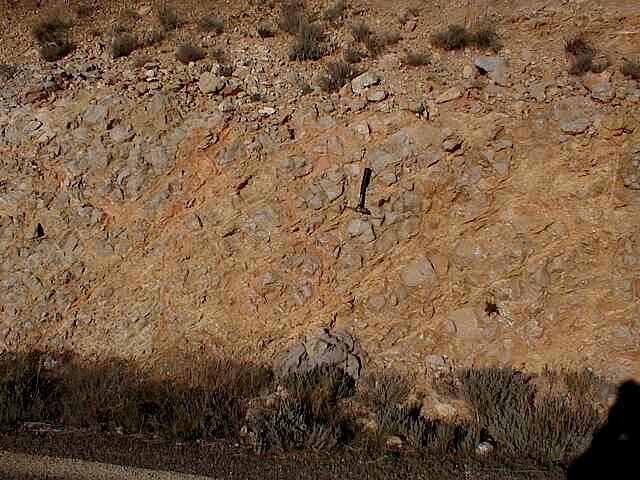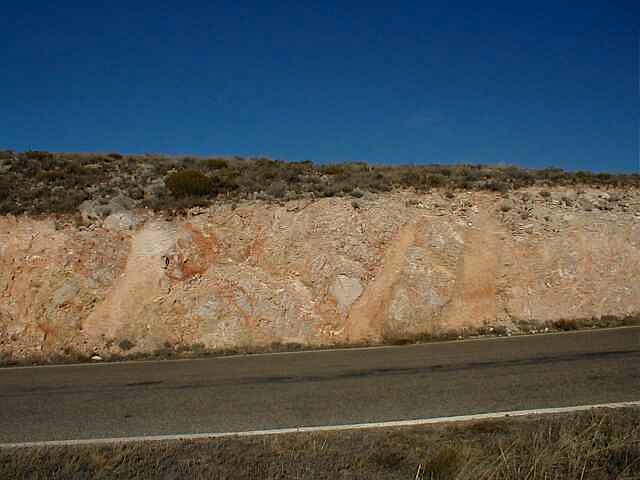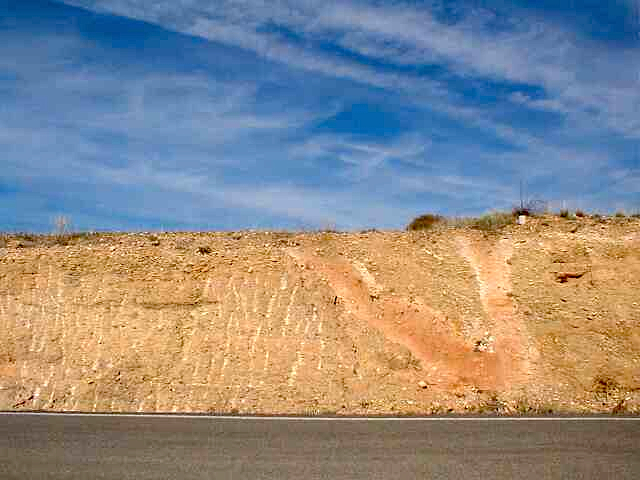The investigation of the Azuara and Rubielos large impact structures now lasts about 30 years. Since the early eighties of the last century we have produced abundant and very exciting evidence for this unique geological scenario on the Iberian peninsula – despite much bitter opposition from various sides, persons and for various motives, which can be looked up elsewhere on this website. Much of our geological and petrographical material is being presented here in the web, but it is only part of an accumulation many times greater. Therefore we have decided to add little by little to the complex of the Azuara and Rubielos de la Cérida impact geology, and we don’t give up hope that a few more geologists become motivated to visit this extraordinary meteorite impact ensemble of some 120 km length.
We begin with an outcrop scenario easily accessible roadside at the village of Moyuela in the middle of the Azuara structure (Fig. 1) typically showing the enormous destruction the impact exerted on the well-bedded Jurassic limestones, which is inexplicable by normal Alpidic tectonics.
Fig. 1. The Azuara impact structure and the location of the Moyuela outcrop.
Fig. 2. The normally well bedded Jurassic limestones have completely disintegrated to become a kind of a megabreccia. A larger limestone block having preserved some coherence has obviously been markedly rotated. Such an isolated rotation of larger blocks is a typical impact feature, and similar situations will be shown in upcoming contributions.
Fig. 3. Only a few ten meters aside: The bedding of the Jurassic limestones is still well recognizable but in clear disarray. Obviously strong dilatation, probably initiated by impact rarefaction waves, has enabled loose material to penetrate the limestone complex and to establish a net of breccia dikes.
Fig. 4. Within the same megabreccia complex: more breccia dikes of bigger size are cutting sharply through the remnants of the limestone bedding. Any kind of karstification can absolutely be excluded.
Fig. 5. A nice counterpart of a breccia dike emplacement is found roadside west ahead of Escorihuela in the Rubielos de la Cérida impact basin. Different from the Jurassic environment at Moyuela the dikes are in this case sharply cutting through Lower Tertiary conglomerates.







































































